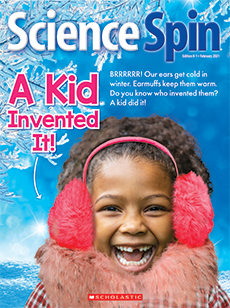March 2022
If You Give a Moose Some Help
Academic Standards
Reading Objective:
Children will identify steps people can take to make sure moose have the habitat and protection they need to survive.
Next Generation Science Standards:
K-ESS3-3: Ways that People Can Help Animals
1-LS1: How Animals Use External Parts to Survive
Vocabulary:
polluted
Check comprehension and inspire discussion.
1. How do trees help moose?
(Trees give shade. This helps moose cool off in the summer.)
2. Why are bushes just right for moose?
(They’re the right height for moose to nibble on.)
3. Do moose always stay out of the water?
(No. Moose swim in lakes and rivers and eat the plants that grow there.)
4. What is your favorite way to help moose?
(Answers will vary.)
Go online to print or project the Reading Checkpoint.
- Moose are the biggest members of the deer family .
- Moose live in places that get cold and snowy. Their long legs help moose walk in deep snow.
- When moose dive under water, their nostrils close automatically. This keeps them from getting a nose full of water!
Materials: empty toilet paper rolls, fat such as Crisco, sunflower seed or nut butter, plastic knives, birdseed, trays, scissors, string, pencils, crayons or markers, copies of the skill sheet
Overview: After reading about helping moose, kids help birds by making bird feeders.
Directions:
- A week before the lesson: Have kids bring in empty toilet paper rolls. Check for nut allergies; procure nut-free fat if needed.
- Just before the lesson: Cut 2-ft. lengths of string (one per child). Set up work stations with TP rolls, bowls of nut butter or alternative, plastic knives, trays of birdseed.
- Gather kids. Remind them that they read about ways to help moose. Tell them they will now help birds by making bird feeders!
- Send kids to the work stations. Have them mark their initials inside the TP roll. Then they can use knives to spread the fat on the roll in a thick layer (so the seeds stick).
- Next, roll the TP rolls in the birdseed. Then loop string through each. Tie ends together.
- Hang the feeders outside. Record results on the skill sheet.
